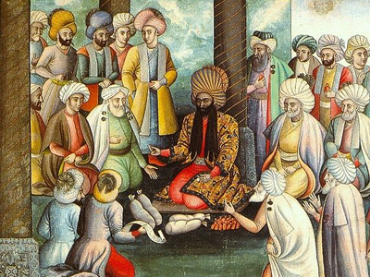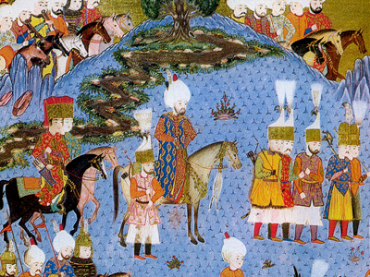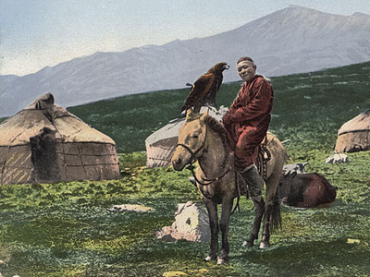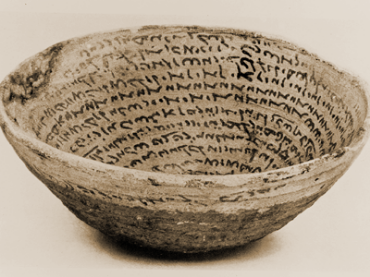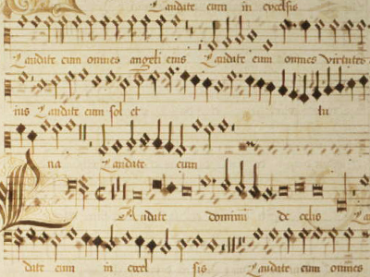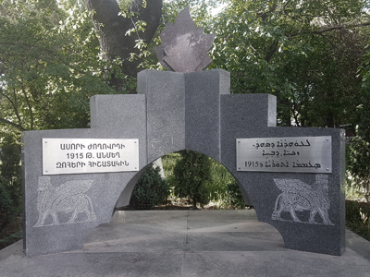History
Excavations on the Island of Mochlos, Crete, in 1908
Series: Analecta Gorgiana 292
ISBN: 978-1-60724-521-6
The original site report detailing the discovery and first excavations at the Minoan settlement on Mochlos, Crete.
$37.00
Moslem Women
Series: Exploring the House of Islam: Perceptions of Islam in the Period of Western Ascendancy 1800-1945 1
ISBN: 978-1-60724-409-7
Moslem Women is built around six main chapters; half are devoted to the place and experiences of Moslem women, and half consider the Christian mission to these women. The Zwemers acknowledge some of the great women of Islamic history, such as Rabia, the famous early mystic, and Nurah Mahal, wife of the Mughal Emperor Jahangir. They speak in glowing terms about advances in the women’s situation in post-Ottoman Turkey. Their work is dedicated to serving Muslims and to seeing them as people rather than as faceless numbers; it is an excellent model for today’s Christians who feel called to engagement with Islam.
$189.00
Mohammed and Islam
By Ignaz Goldziher; Translated by Kate Seelye; Introduction to the 1917 edition by Morris Jastrow; Introduction to the 2009 edition by Douglas Pratt
Series: Exploring the House of Islam: Perceptions of Islam in the Period of Western Ascendancy 1800-1945 2
ISBN: 978-1-60724-410-3
Ignaz Goldziher was a pre-eminent scholar of Islam during the late 19th and early 20th centuries. This book encapsulates his own lifetime of work and provides something of an historical commentary on his epoch in the Western academic study of Islam. One of its strengths is that Goldziher’s investigation of historical development probes into underlying religious motivations and allied theological issues. The book quickly became a classic of its day. It remains a classic that, in our day, is well worth re-visiting as it can still inform our understanding of contemporary Islam, whose roots lie in all that Goldziher covers.
$180.00
The Rebuke of Islam
Being the Fifth Edition, Rewritten and Revised, of The Reproach of Islam
By W. H. T. Gairdner; Introduction by Colin Chapman
Series: Exploring the House of Islam: Perceptions of Islam in the Period of Western Ascendancy 1800-1945 3
ISBN: 978-1-60724-411-0
Temple Gairdner’s The Rebuke of Islam, published in 1920, has long been recognized as one of the classics of Christian response to Islam in the early 20th century. Part of its significance is that Gairdner’s approach sums up the very best of earlier approaches (especially in the 19th century), but breaks significantly new ground and therefore points forward to approaches that have been developing between his time and the present day.
$154.00
Christianity and Islam
The Bible and the Koran
By W. R. W. Stephens; Introduction by Clinton Bennett
Series: Exploring the House of Islam: Perceptions of Islam in the Period of Western Ascendancy 1800-1945 4
ISBN: 978-1-60724-412-7
Based on lectures delivered in Chichester Cathedral, this book mirrors typical nineteenth century English attitudes toward the non-European space. This needed Christianity and European political oversight, or its people would remain backward and spiritually lost. The book shows how someone whose inclinations were liberal could look at Islam and dislike what he saw. On the other hand, the book also shows that a non-specialist scholar in the second half of the nineteenth century could write seriously if not impartially about Islam using material available in European languages. This suggests that Islam was a subject of increasing interest in Victorian England.
$133.00
Its Saints and Shrines
An Introduction to the Study of Sufism with Special Reference to India
By John A. Subhan; Introduction by David Singh
Series: Exploring the House of Islam: Perceptions of Islam in the Period of Western Ascendancy 1800-1945 5
ISBN: 978-1-60724-413-4
A convert to Christianity from the Qadiri Order, John A. Subhan is well-known for his seminal work, Sufism: Its Saints and Shrines. Sufism prepared him for faith in Jesus and his Injil. His Sufi background and intimate knowledge of its beliefs and practices enabled him to explain Sufism to others. All ten chapters in Sufism are interesting, including chapter eight, which contains a comparative discussion of Sufism in the broader Hindu context. It is a must read for all, not only because it is a window into the world of a great Sufi convert but also because his insight is still relevant today.
$193.00
Greek and Syriac Miniatures in Jerusalem
With an Introduction and a Description of Each of the Seventy-one Miniatures Reported
Series: Kiraz Manuscript Archive 2
ISBN: 978-1-60724-417-2
Hatch presents in this volume seventy-one Greek and Syriac miniatures which he describes and reproduces in beautiful images. These belong to the Byzantine period, most of which were painted in the Second Golden Age. Eight belong to the thirteenth century, but the rest are the works of artists who lived in the eleventh and twelfth centuries. All are religious in character, some being scenes and others portraits. The present volume presents Hatch’s images from 1931 after applying computer digital enhancements to them. The result is lucid.
$350.00
Inscriptions from Privernum
Series: Analecta Gorgiana 293
ISBN: 978-1-60724-522-3
In this site report Armstrong presents the surviving evidence for both the Volscian remains and the subsequent Roman settlement including sections on the inscriptions, site topography and history, and plans.
$45.00
The Gables of the Propylaea at Athens
Series: Analecta Gorgiana 294
ISBN: 978-1-60724-523-0
William Dinsmoor, one of the experts who directed the first reconstruction of the Athenian Acropolis, here sets out the process by which he was able to piece the gables of the Propylaia together from surviving fragments.
$40.00
The Fountain of Glauce at Corinth
Series: Analecta Gorgiana 295
ISBN: 978-1-60724-524-7
In this paper Elderkin gives a detailed description of the remains of the Fountain of Glauce in Corinth and the engineering methods used in its construction.
$37.00
Medusa, Apollo, and the Great Mother
Series: Analecta Gorgiana 296
ISBN: 978-1-60724-525-4
Arthur Frothingham, one of the founding fathers of Art History, here discusses the problem of the Gorgon in ancient Greek art by arguing that Medusa represents a lost prehistoric goddess.
$36.00
Greek Inscriptions from Sardes
Series: Analecta Gorgiana 297
ISBN: 978-1-60724-526-1
This piece includes the text, translation, and commentary for a long inscription found on the temple of Artemis and shorter honorific inscriptions on cylindrical stelai found in the ancient city, all dating from the 4th century BC.
$77.00
Who Built the Arch of Constantine? Its History from Domitian to Constantine
Series: Analecta Gorgiana 298
ISBN: 978-1-60724-527-8
Arthur Frothingham, one of the founding fathers of Art History, here discusses the problem of the Arch of Constantine, whose form and artwork is at odds with the artwork of the era of Constantine.
$45.00
Methods of Determining the Date of Roman Concrete Monuments
Series: Analecta Gorgiana 204
ISBN: 978-1-60724-433-2
Esther van Deman, an important historian of architecture, shows the methodology by which building chronology was set for Roman concrete buildings,
$46.00
Attic Building Accounts
Series: Analecta Gorgiana 205
ISBN: 978-1-60724-434-9
William Dinsmoor, the famous historian of Greek architecture, presents the epigraphical evidence for this building process in this series of papers divided by individual building.
$58.00
Roman Remains in the Town and Territory of Velletri
Series: Analecta Gorgiana 206
ISBN: 978-1-60724-435-6
Wagener and Ashby here give a report on the Roman remains at the site of Velitrae including roads, temples, basilica, and the amphitheater.
$36.00
The Iconography of the Ascension
Series: Analecta Gorgiana 207
ISBN: 978-1-60724-436-3
Earnest DeWald traces the development of the iconography of the Ascension from its earliest type through to the Gothic form, showing the manner in which the Eastern influence modified the types current in western art.
$39.00
The Characteristics of Eye Beads from the Earliest Times to the Present
Series: Analecta Gorgiana 208
ISBN: 978-1-60724-437-0
In this ambitious article Eisen creates a chronology of eye beads (glass beads decorated with eye-like spots) from sites in Europe, the Near East, and North Africa.
$36.00
Babylonian Origin of Hermes the Snake-God, and of the Caduceus
Series: Analecta Gorgiana 209
ISBN: 978-1-60724-438-7
Arthur Frothingham, one of the founding fathers of Art History, here discusses the origins of Hermes, and suggests that the prototype of Hermes was an Eastern deity of Babylonian extraction.
$38.00
Studies in the History and Topography of Locris.
Series: Analecta Gorgiana 210
ISBN: 978-1-60724-439-4
Ancient Locris stretched from Thermopylae to Larymna and was home to the Locrians. In this ariticle Oldfather presents a survey of the sites and topography of this important region of Greece.
$42.00
The Serpent with a Human Head in Art and in Mystery Play
By John Bonnel
Series: Analecta Gorgiana 211
ISBN: 978-1-60724-440-0
In this paper John Bonnel argues that the representation of the serpent in Eden as having a human head originated in the mystery plays of the 13th century, where the serpent was played by an actor and had a head.
$38.00
Ancient Orientation Unveiled
Series: Analecta Gorgiana 212
ISBN: 978-1-60724-441-7
Frothingham presents an ambitious overview of the development of orientation, or the directionality of sacrifice, prayer, and ritual, played a key role in ancient ceremonies, in the practice of ancient religions.
$51.00
The Origin of the Doric Entablature
Series: Analecta Gorgiana 213
ISBN: 978-1-60724-442-4
Lester B. Holland, professor of Architecture at the University of Pennsylvania, addresses the puzzle of Doric entablature, suggesting that the persistence of the form of the entablature is due to its mimicry of earlier fortifications.
$39.00
The Ludovisi Relief and Its Companion Piece in Boston
By L. D. Caskey
Series: Analecta Gorgiana 214
ISBN: 978-1-60724-443-1
The Ludovisi throne is a famous works of early Classical sculpture, a white marble chair covered with bas relief. This article compares the Ludovisi throne to a similar piece in Boston, arguing that the two works are companion pieces.
$40.00
Latin Inscriptions from Corinth
By L. R. Dean
Series: Analecta Gorgiana 215
ISBN: 978-1-60724-444-8
This article provides transcription, text, and commentary on the Latin inscriptions known in Corinth in 1918 and provides a useful tool for understanding the civic life of Corinth under Roman control.
$40.00
Filter by
Filter by price
Filter by manufacturer

